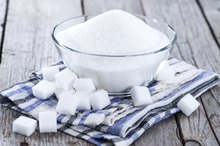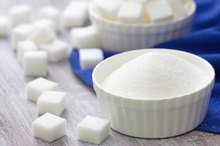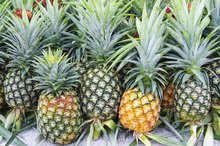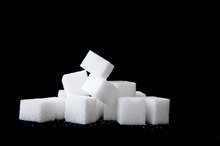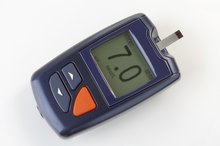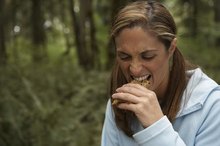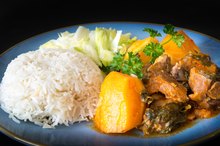Sources of Sucrose Sugar
According to the Canadian Sugar Institute (CSI), sucrose is a naturally occurring carbohydrate in nature. Sucrose is processed into table sugar and used in many foods because it is palatable, highly available, inexpensive and simple to process. The United States Department of Agriculture (USDA) recommends limiting added sugar (sucrose) in the diet 3. Sugar is high in calories but offers few essential nutrients. Individuals who consume excessive amounts of sugar are at risk for weight gain, and children who eat a lot of sugar have a higher incidence of dental caries.
Fruits and Vegetables
Sucrose occurs naturally in all fruits and vegetables. Sugar cane and sugar beets have the highest concentrations of sucrose and are the most common sources of white table sugar. Canned fruits, some dried fruits, jams and jellies all contain sucrose.
Dairy Products
Thirst and a Dry Mouth at Night
Learn More
Sucrose does not occur naturally in milk. It is, however, used to sweeten dairy products like ice cream, yogurt and sherbet.
Beverages
Soda, artificially flavored juices and drinks, sweetened coffee and tea, flavored milk and alcoholic mixers all contain sucrose. The CSI says sugar is also used in the fermentation process for some alcohols, such as wine.
Processed Foods
The Side Effects of Sucrose
Learn More
According to Colorado State University, sucrose can be processed into molasses, brown sugar and confectioner’s sugar. Sugar in food inhibits microbial growth, adds moisture, prevents foods from going stale, enhances texture and color and prevents ice crystals from forming in frozen foods. Sucrose is in many commercial grain products like breads, pastas, tortillas, cakes, pastries, cookies, crackers and other baked goods. Candy, chocolate, gelatin and many condiments all contain sucrose.
- According to Colorado State University, sucrose can be processed into molasses, brown sugar and confectioner’s sugar.
Related Articles
References
- American Diabetes Association: Carbohydrates
- “Journal of the American Dietetic Association”; Position of the American Dietetic Association: use of nutritive and nonnutritive sweeteners; American Dietetic Association; 2004
- United States Department of Agriculture: Dietary guidelines for Americans 2005
- Sugar, brown. FoodData Central. U.S. Department of Agriculture. Updated April 1, 2020.
- Mergenthaler P, Lindauer U, Dienel GA, Meisel A. Sugar for the brain: the role of glucose in physiological and pathological brain function. Trends Neurosci. 2013;36(10):587‐597. doi:10.1016/j.tins.2013.07.001
- Rippe JM, Angelopoulos TJ. Sugars, obesity, and cardiovascular disease: results from recent randomized control trials. Eur J Nutr. 2016;55(Suppl 2):45‐53. doi:10.1007/s00394-016-1257-2
- Allergy/intolerance to sugar. American Academy of Allergy, Asthma, and Immunology. Updated: 5/7/2019
- Jung CG, Yang EM, Lee JH, Kim SH, Park HS, Shin YS. Coca-Cola allergy identified as fructose-induced anaphylaxis. J Allergy Clin Immunol Pract. 2018;6(5):1787-1789.e1. doi:10.1016/j.jaip.2018.02.003
- Mahan LK, Chase M, Furukawa CT, et al. Sugar "allergy" and children's behavior. Ann Allergy. 1988;61(6):453‐458.
- Guidelines ask Americans to limit intake of added sugars. American Dental Association. January 07, 2016
- Gorshteyn, Ida. The Truth About Sugary Drinks and Your Smile. American Dental Association.
- Changes to the Nutrition Facts Label. U.S. Food and Drug Administration. Updated March 12, 2020.
- Sugar, brown. USDA FoodKeeper App. Updated April 26, 2019
Writer Bio
Bethany Fong is a registered dietitian and chef from Honolulu. She has produced a variety of health education materials and worked in wellness industries such as clinical dietetics, food service management and public health.

